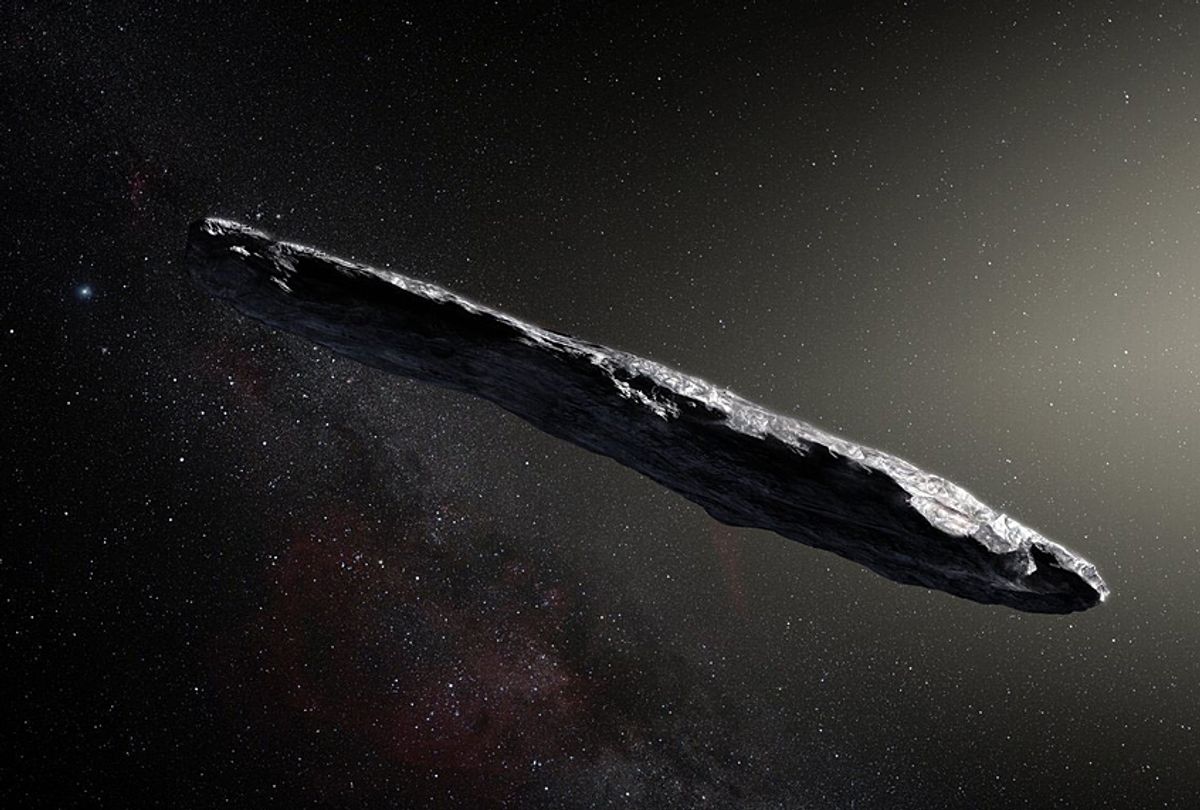An asteroid-like object from elsewhere in the galaxy, called Oumuamua, paid a visit to Earth’s Solar System in mid-October; since then, scientists haven’t been able to shake it off as just another asteroid. Understandably so, given that it was the first object of its kind ever observed. Its unique status drove researchers at Breakthrough Listen, a privately-funded effort to search for extraterrestrial intelligence, to keep a close eye on it. Their goal? To see if the bizarre, unique properties of Oumuamua hint at any "artificial" origins — that is, a whiff of extraterrestrial design.
Oumuamua, which is Hawaiian for "an object from afar," was first observed by a postdoctoral researcher at the University of Hawaii who was sifting through the data stream from the Pan STARRS astronomical survey of the sky. The researcher noticed the object was highly elongated, like a stick, with a long axis 10 times longer than its short axis. Researchers have long suggested this could be an ideal shape for an interstellar spacecraft, as it would minimize abrasions from interstellar gas and dust.
Now, scientists at Breakthrough Listen, a global astronomical program searching for evidence of civilizations beyond Earth, are gearing up to use the Robert C. Byrd Green Bank Telescope in Green Bank, West Virginia, on December 13 to see if they can hear any radio signals being emitted by the object. If they do, it may be strong scientific evidence of alien life.
Avi Loeb, one of Breakthrough’s advisors and the chair of Harvard’s astronomy department, told Salon this object is most likely a rocky object from another planetary system, but what’s most peculiar about it is that it’s the first object in our solar system that isn’t gravitationally bound to the Sun.
“This means that it originated in interstellar space and will return there after passing five times closer to the Sun than the Earth is,” Loeb said. “This is the first interstellar object to be discovered and its axis ratio is so extreme. Therefore when I first learned about it I started wondering whether it might be an artificially-made probe which was sent by an alien civilization, namely an expanded version of Starshot spacecrafts.”
If it was, in fact, made by aliens, how would scientists know? Would any of the signs be recognizable to human life and Earth’s technology?
“We do not know what to expect in case it is artificial in origin,” Loeb told Salon. “But we would like to check for any radio signals. Our radio telescopes are sensitive to the transmission of a single cell phone at the current distance of this object.”
The rush to explore this object is not only motivated by curiosity, but also because time is limited. Oumuamua is expected to leave our solar system, and as Loeb explained, conventional rockets aren’t fast enough to chase it down.



Shares